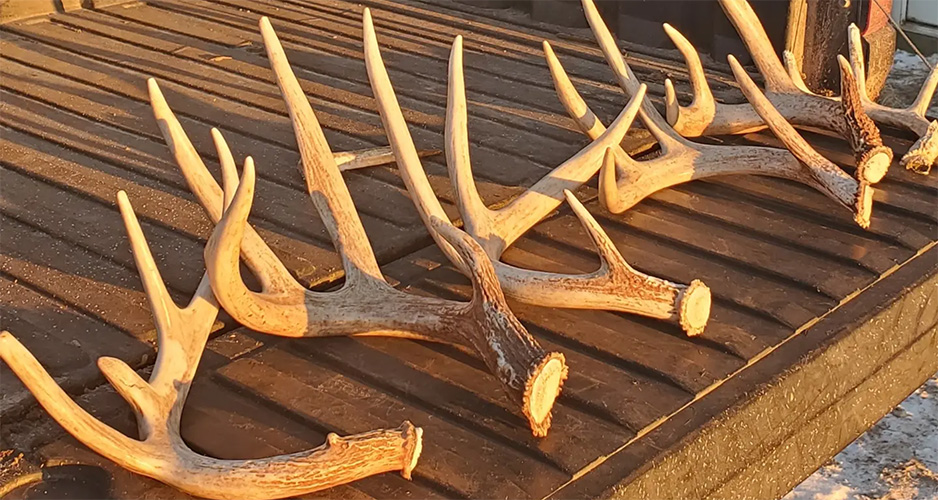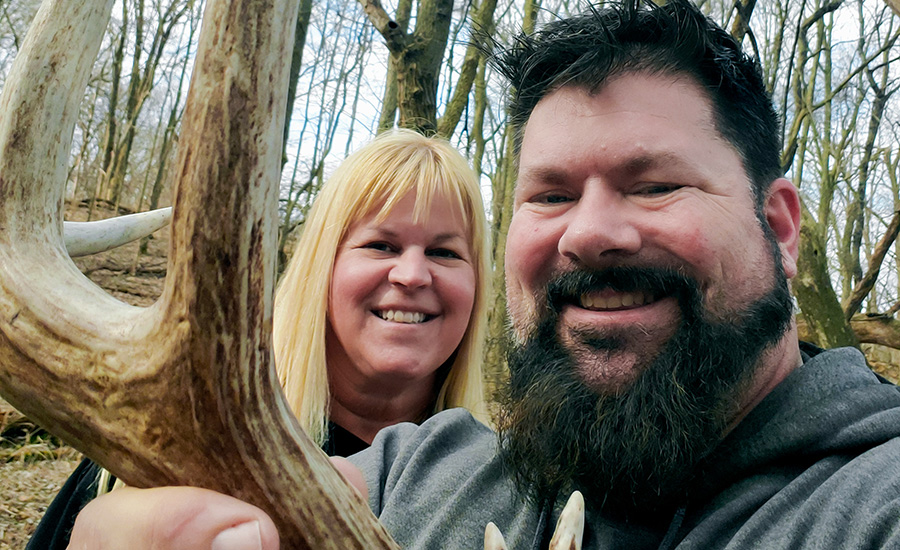Shed hunting is a rite of spring passage for those who prize whitetail deer antlers
It’s that time of year when folks want to get out of the house and enjoy the first flashes of spring warmth. For many, it means the renewal of an annual tradition: shed hunting.
Every year, mature male whitetail deer naturally drop their antlers. This usually happens between February and March, but can vary from year to year. The deer do this so they can grow a newer, bigger set of horns for the following fall. Whitetail deer use their antlers to fight other male deer during the mating season.

Once these antlers are dropped, they are fair game for collectors. With that being said, please check all local wildlife regulations. Many state-owned properties prohibit the removal of any objects, including shed antlers. Also, trespassing is never allowed, even if the shed antler is visible from a neighboring property.
How do you shed hunt? Well, that’s the million-dollar question. I remember reading an article from a well-known outdoor publication, which cited 20 tips for finding sheds. I agreed with maybe four of them. From my experience of 25 years of shed hunting, the best way to find shed antlers is to be lucky.
My family has had our best luck walking along the edge of the timber. I have no explanation for this, no deer whisperer type of sage advice. It just works for us.
There have been other places, too. We’ve found them in the thickest of brush, the middle of a creek, cemeteries, wide open farm fields, even in a tree. We usually find just one antler at a time. Finding a matching set is a rarity, but definitely a prize that is worth all the work.
Earlier is better than later when it comes to hunting antlers, the reason being that you’re not the only one out there looking. Mice will chew on them. Foxes and coyotes have been known to damage them. Squirrels will all but devour a shed in a few days. There is no more bittersweet find in the woods than a beautiful shed that is half eaten.
As a farmer, I have found way too many shed antlers in my tractor’s tires. The whitetail deer’s antlers are made of incredibly hard bone and often have sharp points. These left-behind treasures can turn into a $10,000 replacement tire.
You might wonder how it is that a farmer does not see the antler on the ground. Well, I think most shed hunters can attest that they are fairly easy to walk or drive over. In a cut cornfield, a shed can blend right into the leaf and stalk litter.
Shed hunting can be a fantastic family activity. All you need is the ambition to go do it. The deer losing its antlers does not hurt them, so even people opposed to hunting can enjoy it. Shed hunting is nonpartisan! That’s right (or left), even the staunchest of Republicans and Democrats can walk hand in hand looking for sheds. They can even invite their independent neighbors and all bond in the woods.
In all seriousness, it is an incredibly fun thing to do with a group of people. Not only do you have more eyes looking but there is a sense of group accomplishment whenever a shed is found. The antler is passed around for everyone to look at and discuss, until someone excitedly says, “Let’s find another!” It is addicting. Some would liken it to looking for those elusive morel mushrooms or the sweetest strawberry in a berry field.
Sometimes, it is just a good excuse to go for a walk in the woods. That is something we should all do more of.





